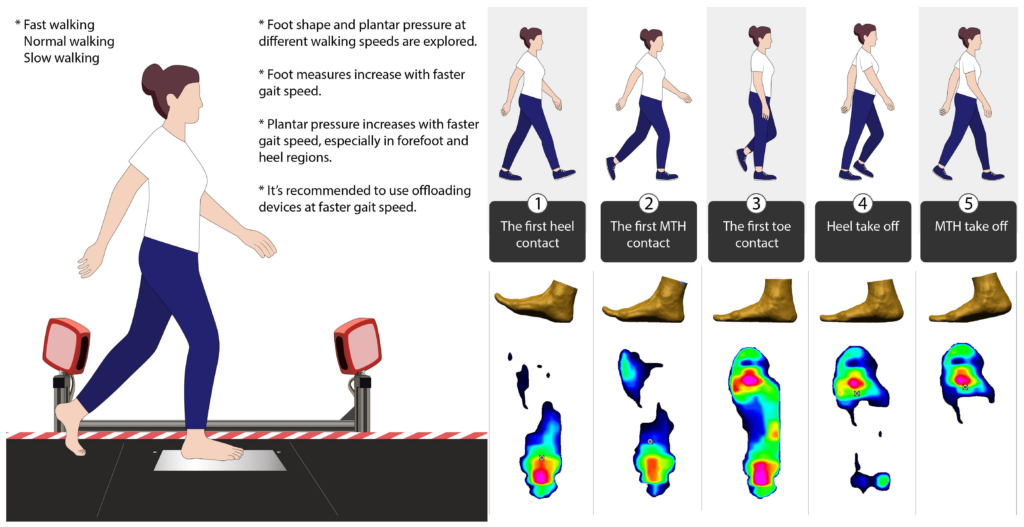Highlights
- Foot measurements show an insignificant increase at a more rapid walking speed.
- Faster walking speed results in higher mean peak plantar pressure in the forefoot and heel areas, along with a lower pressure time integral in all foot regions.
- Suitable offloading devices are recommended for people with diabetes during exercise at higher walking speeds.
- An insole with a different structure and material for each specific area contributes to plantar pressure offloading
Abstract
Official guidelines state that suitable physical activity is recommended for patients with diabetes mellitus. However, since walking at a rapid pace could be associated with increased plantar pressure and potential foot pain, the footwear condition is particularly important for optimal foot protection in order to reduce the risk of tissue injury and ulceration of diabetic patients. This study aims to analyze foot deformation and plantar pressure distribution at three different walking speeds (slow, normal, and fast walking) in dynamic situations. The dynamic foot shape of 19 female diabetic patients at three walking speeds is obtained by using a novel 4D foot scanning system. Their plantar pressure distributions at the three walking speeds are also measured by using the Pedar in-shoe system. The pressure changes in the toes, metatarsal heads, medial and lateral midfoot, and heel areas are systematically investigated. Although a faster walking speed shows slightly larger foot measurements than the two other walking speeds, the difference is insignificant. The foot measurement changes at the forefoot and heel areas, such as the toe angles and heel width, are found to increase more readily than the measurements at the midfoot. The mean peak plantar pressure shows a significant increase at a faster walking speed with the exception of the midfoot, especially at the forefoot and heel areas. However, the pressure time integral decreases for all of the foot regions with an increase in walking speed. Suitable offloading devices are essential for diabetic patients, particularly during brisk walking. Design features such as medial arch support, wide toe box, and suitable insole material for specific area of the foot (such as polyurethane for forefoot area and ethylene-vinyl acetate for heel area) are essential for diabetic insole/footwear to provide optimal fit and offloading. The findings contribute to enhancing the understanding of foot shape deformation and plantar pressure changes during dynamic situations, thus facilitating the design of footwear/insoles with optimal fit, wear comfort, and foot protection for diabetic patients.

